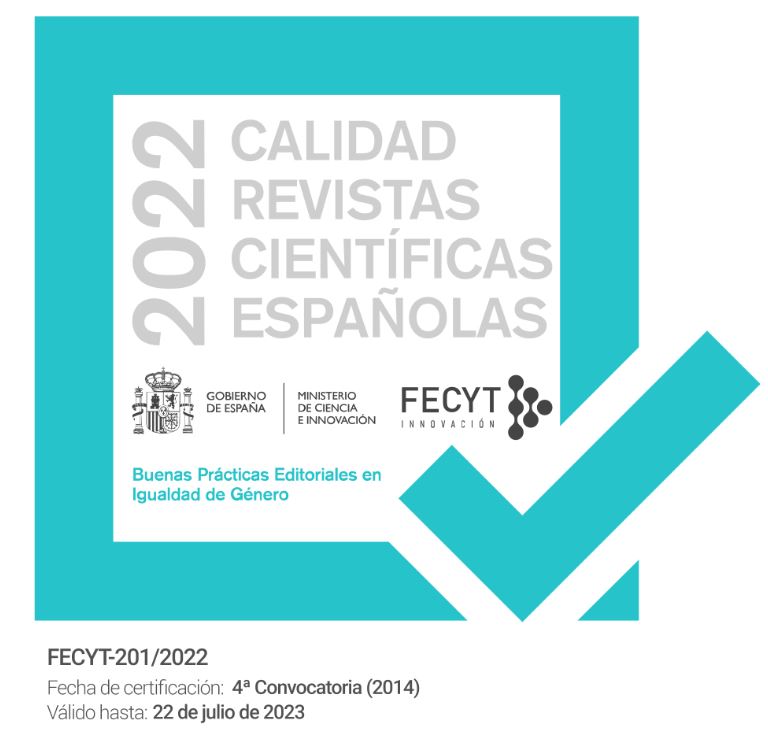La interacción digital como dinámica de construcción colectiva desde distintos perfiles de usuarios para el buen trabajo
DOI:
https://doi.org/10.30827/eticanet.v16i1.11935Abstract
La tecnología emergente ofrece posibilidades exponencialmente irruptoras en la forma de comunicar, relacionarse, socializar, aprender y expresar, en una sociedad inmersa en la ola digital (Toffler, 1997), la sociedad del conocimiento o cuarta ola (García, 2006).
De igual forma evoluciona los requerimientos en cuanto a competencias de los profesionistas y recién egresados, quienes habrán de considerar las diferencias de los perfiles de usuarios en temas de interactividad digital, para ofrecer servicios útiles, que generen valor a quienes dirige su esfuerzo, a la organización de la que es parte y a la sociedad.
Downloads
References
Bustamante, E. (2003). Hacia un nuevo sistema mundial de comunicación. Las industrias culturales en la era digital. Barcelona, España: Gedisa.
Cloutier, Jean. (1973). La communication audio-scripto-visuelle à 'heure desself-media, ou l'ère d'Emerec. Montreal: Presses de l'Université de Montreal.
García, G. (2006). Contenidos educativos digitales: Construyendo la Sociedad del Conocimiento. Cnice. Red Digital, Revista de Tecnologías de la Información y Comunicación Educativas del Ministerio de Educación y Ciencia, (6). Recuperado de http://reddigital.cnice.mec.es/6/Articulos/pdf/Articulos_1.pdf
García, G. y Gértrudix, B. (2009). El Mare Nostrum Digital: Mito, ideología y realidad de un imaginario sociotécnico. Icono 14, Revista científica de comunicación y tecnologías emergentes, 7 (1), 7-30. doi:http://dx.doi.org/10.7195/ri14.v7i1.331
Gardner, H. (enero, 2008). Five minds for the future. International School of Geneva, The Ecolint Meeting in Geneva: Schools Facing the Challenges of the Contemporary World Conference. Published in The international school of Geneva conference report, 20–40. In Geneve, Switzerland. Recuperado de https://howardgardner01.files.wordpress.com/2012/06/five-minds-for-the-future-january-20081.pdf
Gardner, H. & Mucinskas, D. (2013). Educating for Good Work: From Research to Practice. British Journal of Educational Studies, 61 (4), 453-470. doi: 10.1080/00071005.2013.829210
Gardner, H., Csikszentmihalyi, M. & Damon, W. (2002). Buen trabajo. Cuando ética y excelencia convergen. Barcelona: Paidós.
Hayden, T. & Webster, T. (2015). The mobile commerce revolution, business success in a wireless world. United States: Que-Pearson Education.
Kotler, P. & Armstrong, G. (2012). Marketing. México: Pearson Educación.
Kotler, P., Hermawan, K & Setiawan, I. (2011). Marketing 3.0. México: LID Editorial Empresarial.
Kutchera, J., García, H. & Fernández, A. (2014). Éxito: Su estrategia de marketing digital en 5 pasos. México: Grupo Editorial Patria.
McCrindle 2016. McCrindle Mark. The ABC of XYZ. The generation map. Recuperado de: http://mccrindle.com.au/resources/whitepapers/McCrindle-Research_ABC-03_The-Generation-Map_Mark-McCrindle.pdf
McCrindle, M. (2014). The ABC of X, Y, Z: Understanding the global generations. Generations Defined. Recuperado de http://theabcofxyz.com/free-content/#1
Ortega, C. y Torres, T. (2003). Indicadores de calidad en las plataformas de formación virtual: una aproximación sistemática. Eticanet, (1), 1-19. Recuperado de http://www.ugr.es/~sevimeco/revistaeticanet/Numero1/Articulos/Calidade.pdf
Prahalad, C. & Krishnan, M. (2008). The new age of innovation. Driving co-created value through global networks. USA: McGraw-Hill.
Toffler, A. (1997). La tercera ola. España: Plaza & Janes.
Tuning América. (2015). Competencias genéricas de América Latina. Recuperado de www.tuningal.org/es/competencias/geologia.
Published
Issue
Section
License
The authors who publish in this journal agree to the following terms: The authors retain the copyright and grant the journal the right to be the first publication of the work as well as licensed under a Creative Commons Attribution License that allows others to share the work with an acknowledgment of the authorship of the work and the initial publication in this magazine. Authors are allowed and encouraged to disseminate their work electronically (for example, in institutional repositories or on their own website) before and during the submission process, as it may lead to productive exchanges as well as further citation. Earliest and greatest of published works (See The Effect of Open Access).













